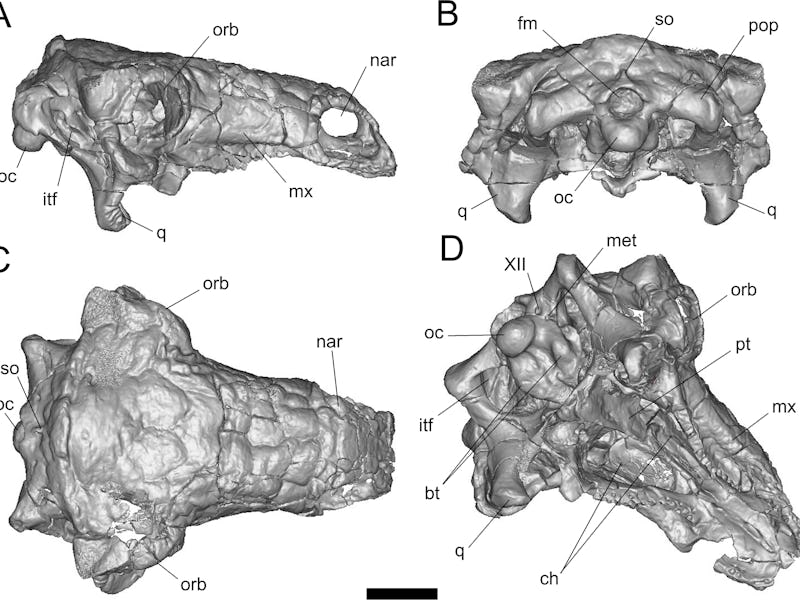Digital Reconstruction of Pawpawsaurus Skull Shows It Had a Powerful Nose
Pawpawsaurus is the proud owner of a sweet name and a serious honker.

It’s lucky for the Pawpawsaurus that it was separated from its more famous cousin, the Ankylosaurus, by about 35 million years. That’s because the Texan dinosaur lacked the fused tail bone and heavy club that made the Ankylosaurus such an unappetizing target for predators. It was also smaller and less heavily armored, and it had less developed senses of hearing and smell.
Still, for a creature roaming the planet 100 million years ago, the Pawpawsaurus was pretty advanced.
A new research study, published in PLOS ONE, describes for the first time that advancement with a digitally reconstructed Pawpawsaurus skull.
The Pawpawsaurus super power, besides a decent set of back armour, may have been its sense of smell. “The CT scans revealed an enlarged nasal cavity compared to dinosaurs other than ankylosaurians. That may have helped Pawpawsaurus bellow out a lower range of vocalizations, improved its sense of smell, and cooled the inflow of air to regulate the temperature of blood flowing into the brain,” said lead author Ariana Paulina-Carabajal in a release.
You wouldn't want to mess with the tail end of an Ankylosaurus, but its primitive cousin Pawpawsaurus was nothing to scoff at.
The beast’s nasal cavity was about 30 percent the length of its skull, about equal to modern crocodiles. This ratio is a decent measure of how much an animal relies on its sense of smell.
The researchers were able to make these measurements by using high-powered X-rays to image slices of the skull, and then digitally reconstruct a 3D model. Although the brain tissue itself is of course lost to history, a lot of information can be gained from measuring the skull cavity it sat in.
“Once we have the 3D model, we can describe and measure all its different regions,” Paulina-Carabajal said. We can then compare that to existing reptile brains and their senses of hearing and smell.” The Pawpawsaurus ear cavities were also similar to today’s crocodiles.
Although the Pawpawsaurus was relatively primitive, it clearly had already displayed some of the characteristics that made the ankylosaur family so well adapted. Although the ankylosaurs went extinct with most dinosaur species at the end of the Cretaceous, it gave rise to the mighty 20-foot-long armored tank, the Ankylosaurus, which at least one dinosaur nerd contends is the best dinosaur to ever roam the planet.